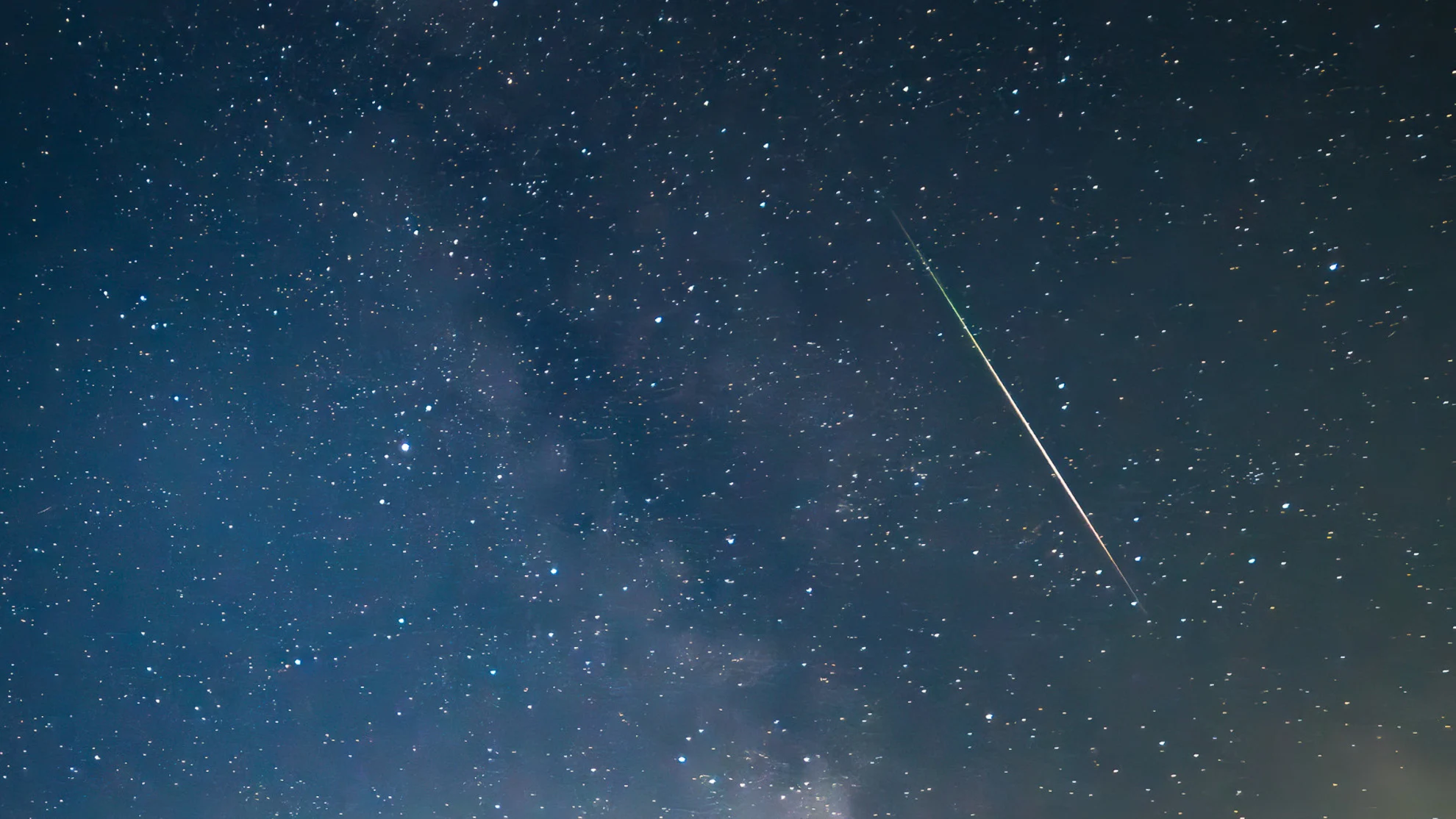
Look up! What's going on in the July night sky?
Spot overlapping meteor showers this month, along with the Moon sharing the sky with some of the brightest planets.
Eyes to the sky for the month of July to see the Buck Moon, two different meteor showers crisscrossing the night, and the waning phases of the Moon appearing near some of the brightest planets in the sky.
Here is the Astronomical Guide for July 2025:
July 2 — First Quarter Moon
July 10-11 — Full Buck Moon
July 15-16 — Saturn near Gibbous Moon (after midnight)
July 17 — Perseid meteor shower begins
July 18 — Last Quarter Moon, delta Aquariid meteor shower begins
July 21 — Venus near Crescent Moon, Jupiter nearby (predawn)
July 23 — Jupiter near Crescent Moon, Venus nearby (predawn)
July 24 — New Moon
July 28 — Mars near Crescent Moon (evening)
July 28-29 — delta Aquariid Meteor Shower peaks
The Moon
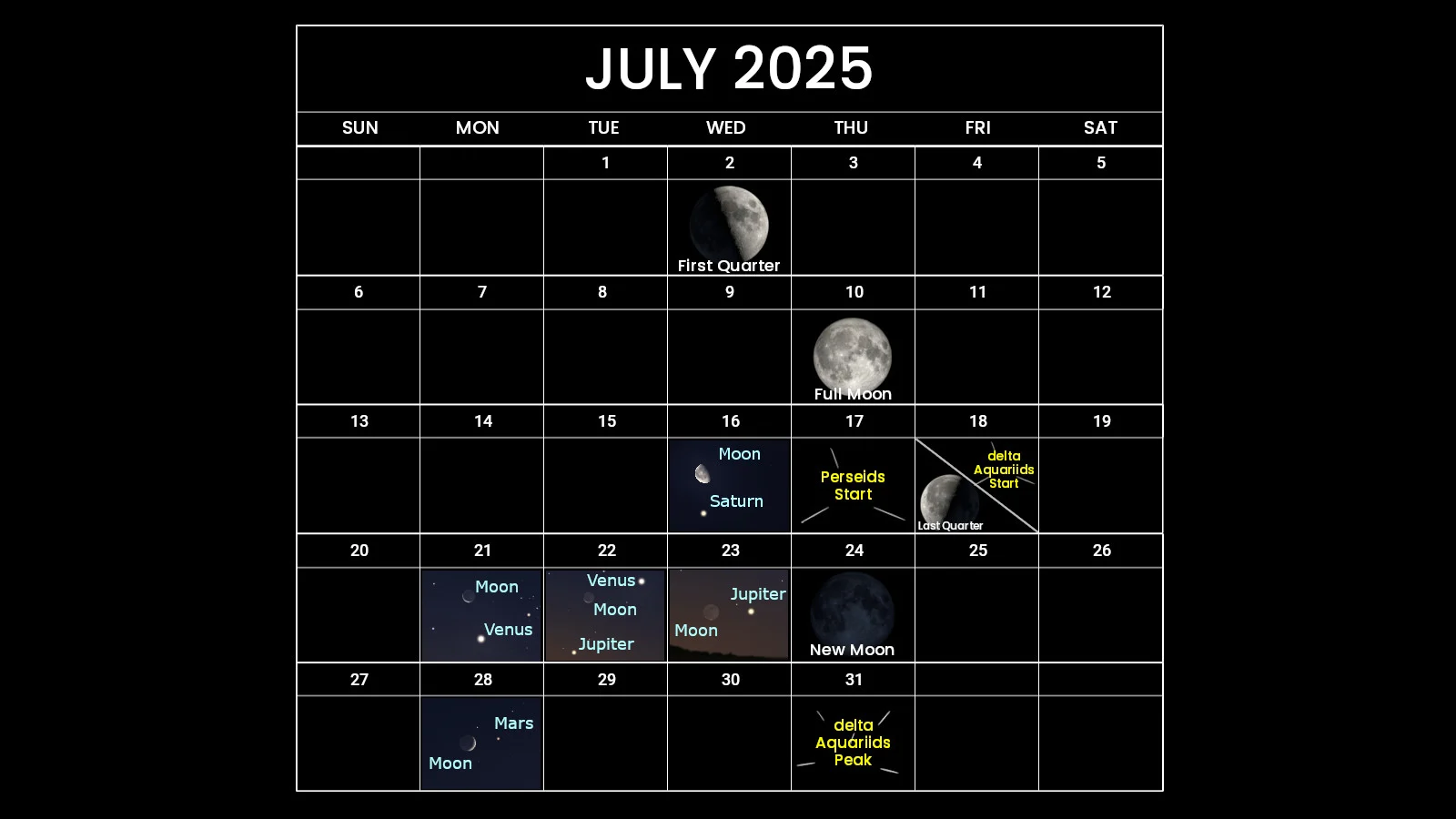
The astronomical events for July 2025, including the phases of the Moon, planetary conjunctions, and meteor showers. (Scott Sutherland, moon graphics from NASA's Scientific Visualization Studio, conjunctions courtesy Stellarium)
The Waxing Crescent Moon will be in the western sky during the evening hours on the first night of the month, with the First Quarter Moon rising on the second.
We will see the Waxing Gibbous Moon from the 3rd through the 9th, with the Full Buck Moon — the first Full Moon of Summer 2025 — crossing the sky from the evening on the 10th through until the morning on the 11th. However, the Moon will appear full (over 99 per cent illuminated by the Sun) from just after midnight on the morning of the 10th through until the evening of the 11th.
The Waning Gibbous Moon will shine in the sky from the 11th to the 16th. Look for it near Saturn in the hours after midnight on the night of the 15th to the 16th.
The Last Quarter Moon rises on the 17th, with the Waning Crescent Moon visible in the eastern predawn sky each morning from the 18th to the 23th. See it pass by bright Venus on the 21st, then nestled between Venus and Jupiter on the 22nd, and finally passing Jupiter on the 23rd.
The night of the 24th could be the best time to look for meteors (see below), as the New Moon gives us the darkest skies of the month.
Then, once the Waxing Crescent Moon reappears in our evening skies, look for it near the planet Mars just above the western horizon after sunset on the 28th.
DON'T MISS: Watch bright meteors flash across the Milky Way this summer
Meteor showers
When we hear about meteor showers, often only the peak of the event gets any solid mention. It's certainly understandable, since that is when the greatest number of meteors from that particular shower are visible to us. However, meteor showers are not limited to just one night. For the dozen or so notable ones we follow each year, the shortest lasts for around 4 days, while the longest goes on for over two months!
During the month of July, we see the start of two different meteor showers, both of which are remarkable in some way.
The first begins on the night of July 17. Appearing to streak out of the constellation Perseus, in the northeastern sky, this meteor shower is known as the Perseids, and it is one of the best of the entire year.
Originating from a comet known as 109P/Swift-Tuttle, the Perseids typically deliver between 50-75 meteors per hour during the shower's mid-August peak. It also produces the greatest number of fireballs out of all the meteor showers of the year. Fireballs are meteors of exceptional brightness, many of which can be seen even through urban light pollution. While most Perseid meteors result from miniscule specks of space dust hitting the atmosphere, the fireballs are due to comet debris ranging from a grain of sand up to a pebble in size.
The Perseids start off slowly in July. For the first week or so after the shower begins, we may see just a few meteors each hour, flashing out of the northeastern sky. However, by the end of the month, it typically is already producing around 15-20 meteors per hour. Even though that's still around two weeks before the Perseid's peak, that's still equivalent to the peak of a moderate meteor shower, like the April Lyrids!
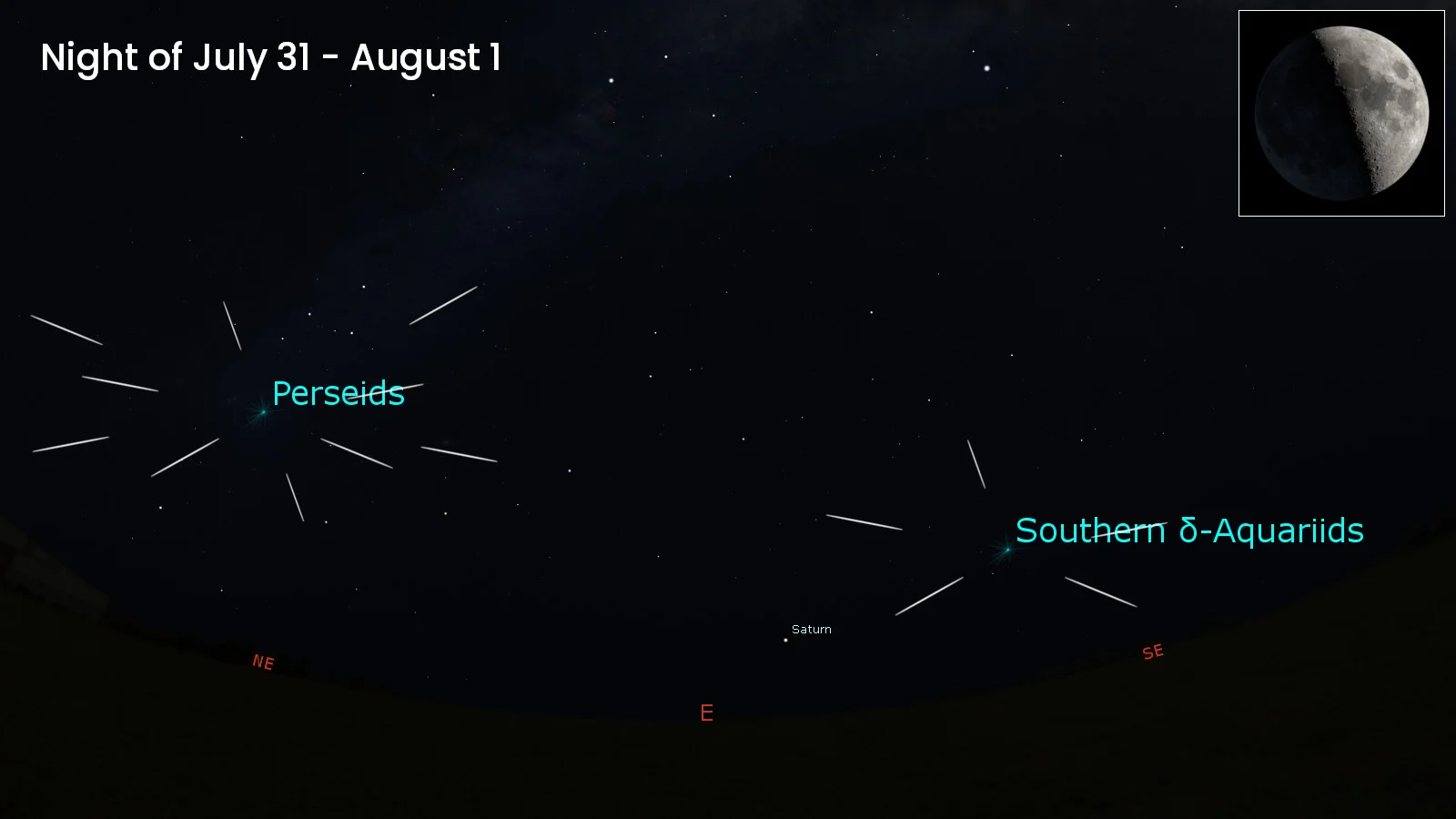
Just one night after the Perseids start, we encounter a second stream of debris in space, resulting in the Southern delta Aquariid meteor shower. While this one tends to put on a better display for those located in the southern hemisphere, skywatchers across Canada should still get a decent show out of it.
As with the Perseids, the delta Aquariids start off at a rate of just one or two meteors per hour on the nights of the first week or so. During the last few nights of July, though, this meteor shower reaches its peak, with the rate jumping up to around 20 per hour. Overlapping with Perseids at that time, the sky could be filled with crisscrossing meteors at the end of the month.
Astronomers aren't quite sure exactly which comet or asteroid the delta Aquariids come from, but right now, the most likely 'parent body' is an oddball comet called 96P/Machholz.
Discovered in 1986, Comet Machholz has a strange orbit and chemical composition compared to other similar comets. One hypothesis for this is that it could be an alien comet from some distant star system that was ejected and then captured by the gravity of our Sun. Thus, each delta Aquariid meteor could represent a piece of some distant solar system burning up in our atmosphere!
READ MORE: How to get the most out of meteor showers and other night sky events
July Constellations
The summer constellations shine this month.
In the south, Leo leads the way as the constellations cross the sky, with Virgo, Libra, Scorpius, Serpens/Ophiuchus, and Aquila in a loose lineup just after sunset. Higher up in the sky we will see Boötes, Hercules, and Cygnus.
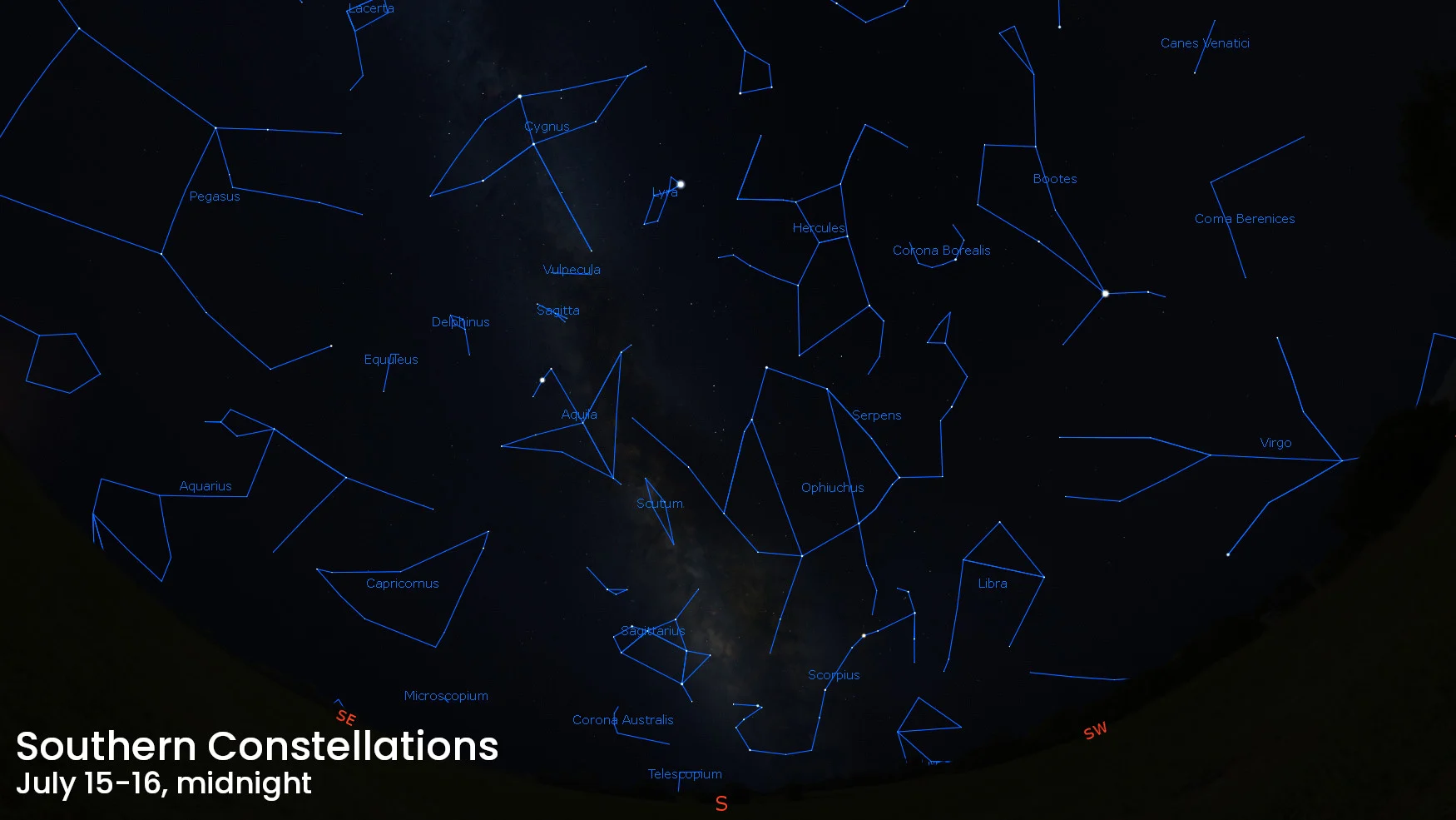
The constellations in the southern sky at midnight on July 15-16, 2025. (Stellarium)
After midnight, Sagittarius, Capricornus, Aquarius, Pisces, and Cetus follow, with Taurus rising predawn and the "bow" of Orion poking up above the horizon just before sunrise. High up, Pegasus, Andromeda and Perseus swing around from the north.
Meanwhile, if you are facing north, Pegasus, Andromeda, and Perseus will be near the northern horizon at the start of the night. Cygnus, Cepheus, Cassiopeia, and Camelopardalis ("The Camel") will be visible low in the evening sky, along with Lynx to the northwest. Ursa Major ("The Big Dipper"), Ursa Minor ("The Little Dipper"), and Draco will be circling the north celestial pole.
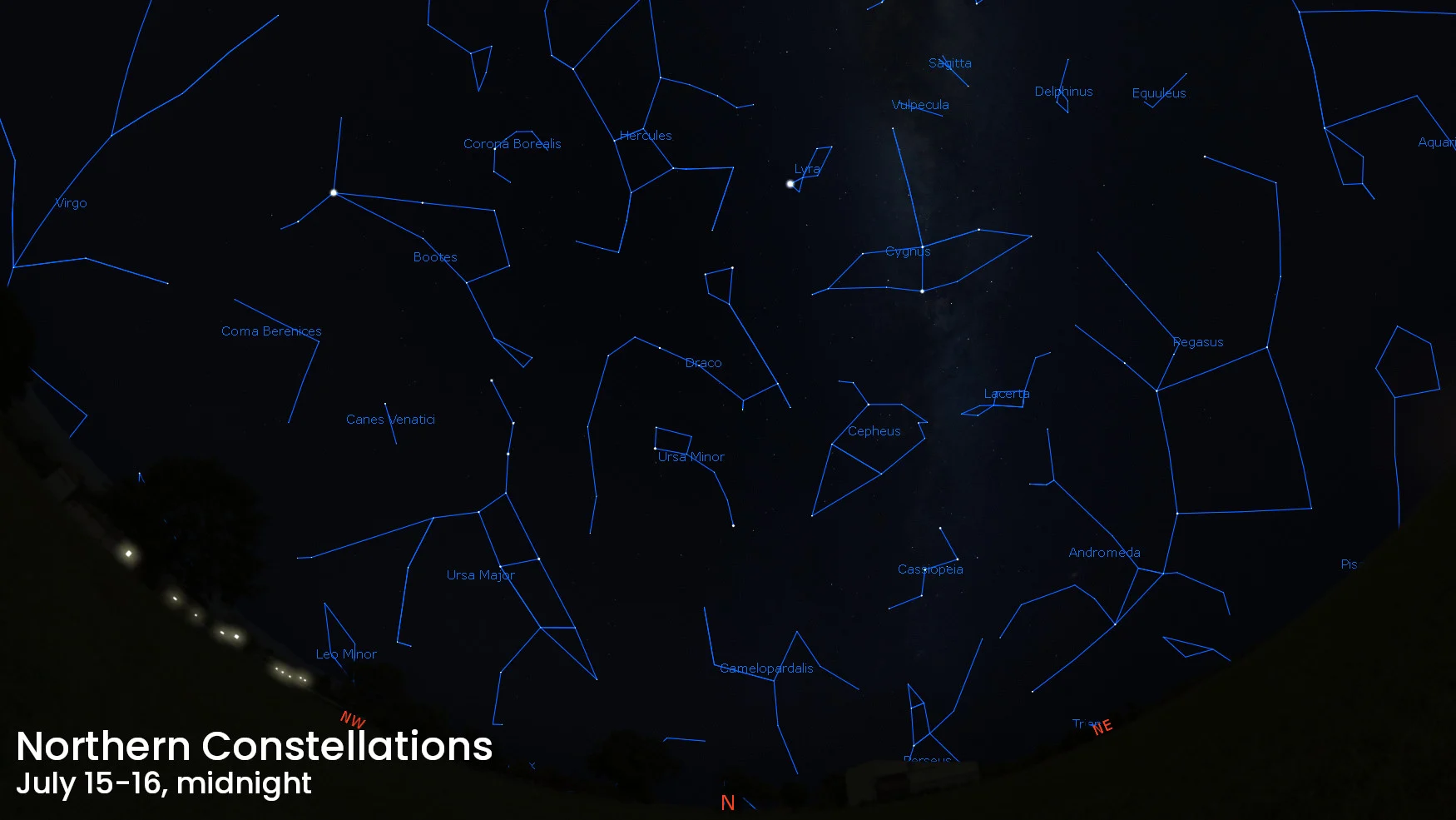
The constellations in the northern sky at midnight on July 15-16, 2025. (Stellarium)
After midnight, Auriga and Taurus will rise in the northeast, with Orion showing up before dawn.
Thumbnail image shows a Perseid meteor captured by Nelson Liu from Ottawa on August 13, 2023.
Editor's note: in a previous version of this article, the list of events at the top of the piece, as well as the calendar image near the top, both stated that the Southern delta Aquariid meteor shower begins on July 12. However, sources such as the International Meteor Organization list it as beginning on July 18, as reflected in the section on meteor showers. These errors have been corrected. We apologize for any confusion.
